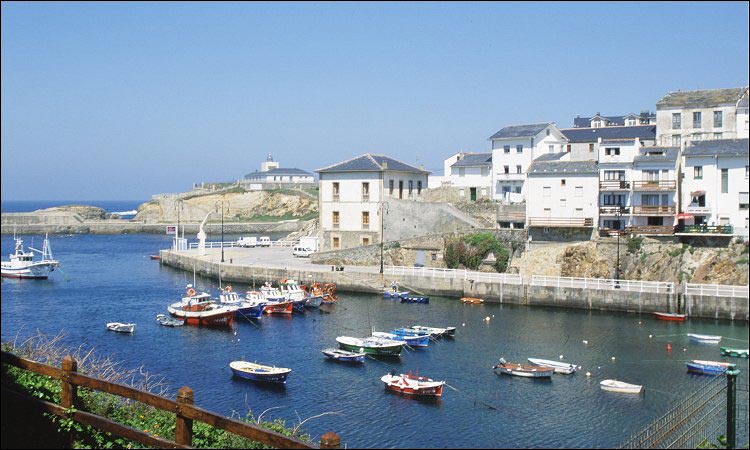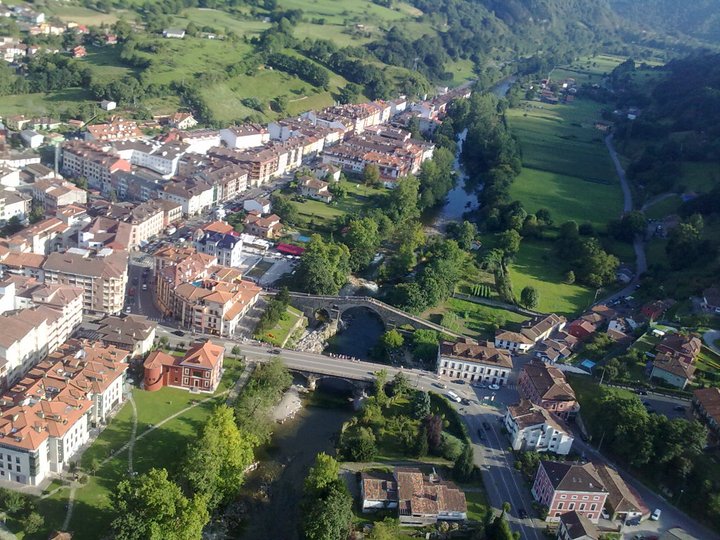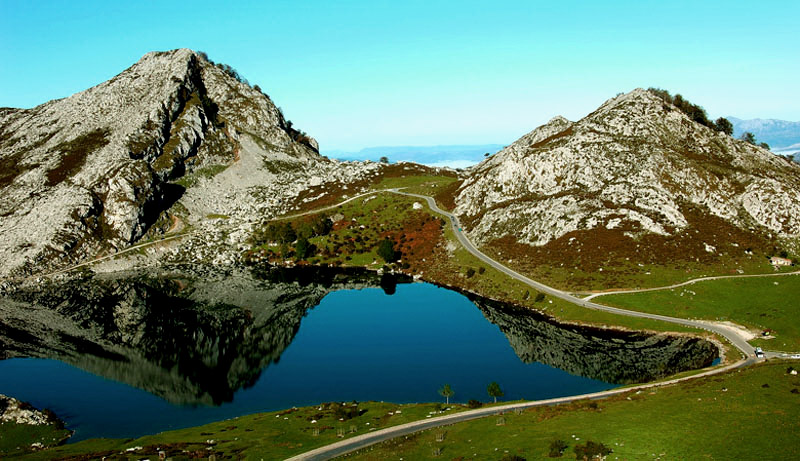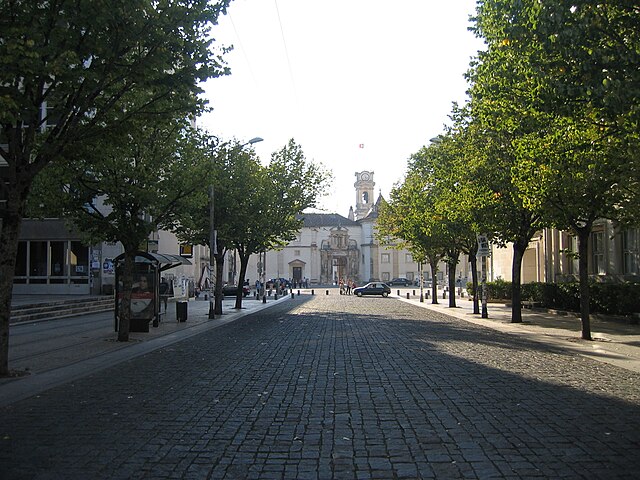Stage 14: Tapia de Casariego - Santuário del Acebo, 148km
Puertos:
Alto de Penouta (885m) 14,5km @ 5,2% (cat.1) - km 32
Alto del Valdedo (434m) 12,0km @ 3,2% (cat.3) - km 57
Puerto de La Marta (1105m) 25,9km @ 3,9% (cat.ESP) - km 89
Alto del Cruce de Acebo (982m) 10,5km @ 6,3% (cat.1) - km 130
Santuário del Acebo (1186m) 8,0km @ 9,5% (cat.1) - km 148 (Meta)
Metas Volantes:
Pola de Allande - km 98
Cangas del Narcea - km 137
The first day of the penultimate weekend is another day through the less well-trodden terrain for the Vuelta that is Eastern Asturias, a wilderness of brutal climbing and less well-known ascents beloved to traceurs for the world of possibilities it offers. This is a short stage but five categorised climbs have been crammed into it, all but one cat.1 or ESP. Sort of (La Marta could be divided into several climbs if you so wished). There is another key GC stage tomorrow, so we are going to try to ensure that there are some gaps created on the first stage of the weekend by what is now becoming a traditional Vuelta method - a climb so steep gaps can't help but be created.
But we at least get there by an interesting method, the kind of thing the Vuelta is not known for in recent years. We begin in the coastal municipality of Tapia de Casariego, but the coast is not going to play a part today as we head straight inland into the valleys. It is not long at all before the climbing begins, as you might expect in a stage of sub-150km with five categorised climbs. The first climb is the
Alto de Penouta, which gradually ramps up the gradients until we reach the
Parque Eólico at the summit. It's not overly steep - averaging just over 5% - but it is long enough to be felt, and should ensure that we get a strong breakaway.
The technical descent into
Boal is the next challenge for the riders, before a very gradual ascent to
Valdedo. This is not really much of a climb - a few km at around 4-5% before a flattening out. There's just a small rise at the very summit to remind you it's a categorised climb before a fast and narrow descent to
Villayón, where the real carnage begins.
The Puerto de la Marta is a very unusual climb in that the total number of metres ascended exceeds the total altitude of the climb (1455m vertical vs. 1105m at the summit), thanks to its status as arguably the most irregular climb in Spain - definitely the most irregular ESP climb the country has. I wrote about this monstrous ascent in the "ESP climbs the Vuelta should be using" thread, and that post is
here. As a result of its irregularity - as seen in
the climb profile it consists of up to six smaller climbs - it doesn't seem overly threatening, averaging under 4%. But this is no Lautaret or Aprica. This has a maximum gradient of 18% and some pretty genuine climbs hidden within its slopes. The first 7km average nearly 9%, which would make a cat.1 climb on their own! Scenery like
this pummelling switchback or
this dramatic mountainside will do its best to distract the riders from the agony of the climb, where getting into a rhythm will be nigh on impossible and with the stage being short, hopefully a strong pace will be able to be pushed here so that a lot of domestiques suffer and riders have to deal with few helpers in the stage to come. The toughest part of La Marta - the
Sierra de Carondio which we meet at the Alto Bustantigo via some
crazy tough roads, crests just after the halfway stage, though there's still some 10km to the summit. After this it's a fast descent into
Pola de Allande which could be done directly, but I have chosen to break it up with a period of false flat, partly to get more climbing into the legs but partly to keep the up-and-down nature of the stage going so that there isn't a lengthy stretch of false downhill flat where the break can be kept on a leash and riders dislodged on La Marta will find it tougher to get back on.
A small uncategorised climb takes us to the village of
Tebongo, where the final double-ascent of the day begins. It is here that the main players will start to really be seen, I think. In the heyday of the Vuelta a Asturias, it's traditional key climb was the challenging Alto del Acebo. At
10km @ 8% it was a pretty solid challenge that often produced good racing, such as the
exhibition from Fabio Duarte in 2010 or Javi Moreno coming from behind to catch Zaballa, Brôco and Sousa in a rainstorm in 2011. There are a lot of ways to climb to the Santuário del Acebo, however, and this is but one. To climb this way would also add more false flat. Instead we are going to start the
seemingly less brutal northernmost face of the climb, directly from Tebongo, to cut around 10km of flat out. The climb from Tebongo is 14,7km @ 6,2%, however we are not climbing all of it, instead at the crossing about 3-4km from the summit we will head downhill on the traditional ascent in order to take on a second route.
The opening part of the ascent from Tebongo is brutal - 2,5km @ 11% - however then it settles down to a
relatively wide, scenic ascent. Nevertheless, a strong pace on the opening will dislodge most of those that struggled back on after Bustantigo/La Marta. The climb then spends another 8km alternating between ramps of 8-9% and false flats, so again a climbing rhythm will be hard to find. Only 18km remain at the summit too, just to add to the problems, so a long distance flyer is plausible, even if unlikely given the final climb. The descent into
Cangas del Narcea lasts about 8km with a number of switchbacks but is on
good roads, and there will be bonus seconds there for the taking at an intermediate sprint there (presumably they would also need to front the money for this stage finish). 10km remain.
From here, I had two options. Two routes to the Santuário del Acebo begin south of Cangas del Narcea, and meet up together. The first would feature just 2km of flat then 8km of very steep climbing including some hormigón, the second would feature a somewhat longer stretch of flat, then just under 7km of even steeper climbing including lots of hormigón. Javier Guillén would probably have picked the latter, the
ungodly steep Villarino de Limés side of the climb (6,8km @ 11%, first 3,5km @ 13,7%!!!). However my opinion was that though it's almost certain the riders will leave it to the last climb, I would prefer to chain the climbs closer together and make the final climb a bit longer to try to ensure helpers who are distanced are not getting in the way, and went for the approach of turning off
here and climbing the
Castro de Limés side which is 8km averaging 9,5%, with the first 4,5km @ 10,6%. There are
brutal switchbacks,
more of the same and
rough tarmac to deal with, and the steepness is such that gaps are going to be created regardless of whether riders go all out or try to save themselves for the coming days. I don't want any of that Giro 2012 "waiting for tomorrow" until the race is over behaviour when I put key GC stages back to back, so I'm going to make sure it's not possible by sticking in a serious mountaintop finish with even more serious gradients. And
nice views so the TV can look at something while the riders grind along at tortoise pace.
Tapia de Casariego:
Santuário del Acebo:











































